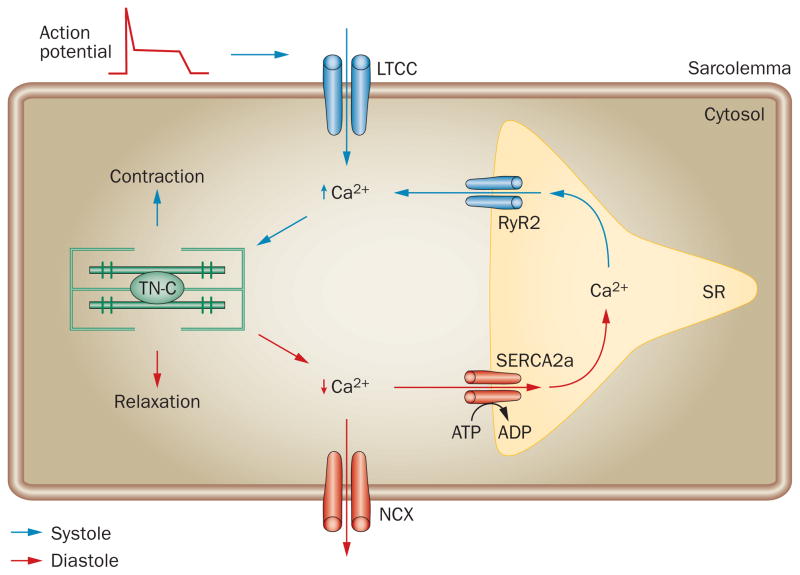Figure 1.
Excitation–contraction coupling. During systole, the action potential depolarizes the sarcolemma. This depolarization enables a small amount of extracellular Ca2+ to enter the cytosol through the LTCCs. Ca2+ entry triggers the release of Ca2+ from the SR through RyR2 channels. The intracellular Ca2+ concentration increases and binding of Ca2+ to TN-C activates myofilaments, resulting in muscle contraction. Removal of cytosolic Ca2+ during diastole is primarily facilitated by SERCA2a, which returns Ca2+ to the SR. Some Ca2+ also exits the cell through NCX. The decrease in intracellular Ca2+ leads to dissociation of Ca2+ from TN-C and muscle relaxation. Abbreviations: LTCC, voltage-dependent L-type Ca2+ channel; NCX, Na+/Ca2+ exchanger; RyR2, ryanodine receptor 2; SERCA2, sarcoplasmic/endoplasmic reticulum calcium ATPase 2; SR, sarcoplasmic reticulum; TN-C, troponin C.

